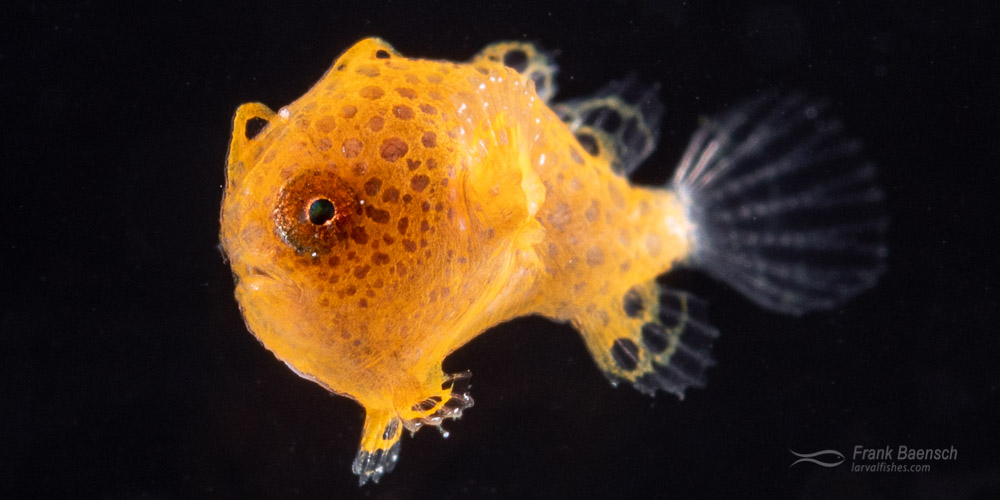
Frank Baensch continues to break new ground in the world of marine aquaculture with the Hawaii Larval Fish Project (HLFP). His successful larviculture & captive-rearing of Commerons’s Frogfish, Antennarius commerson, is the latest feather in Baensch’s already heavily plumaged cap.
Commerson’s Frogfish is also known as the Giant Frogfish or Giant Anglerfish, reaching adult lengths of up to 18 inches (45 cm). This species is wide-ranging, inhabiting both tropical and subtropical locations across the entire Indian and Pacific Oceans, as well as the Red Sea. It is often found in association with sponges, and is extremely variable in appearance.
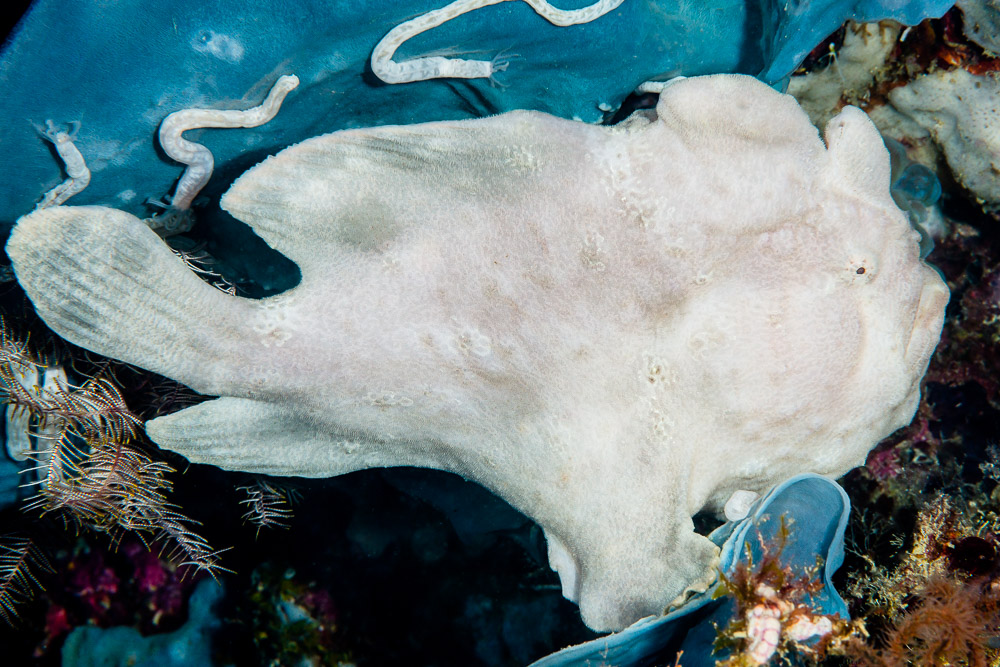

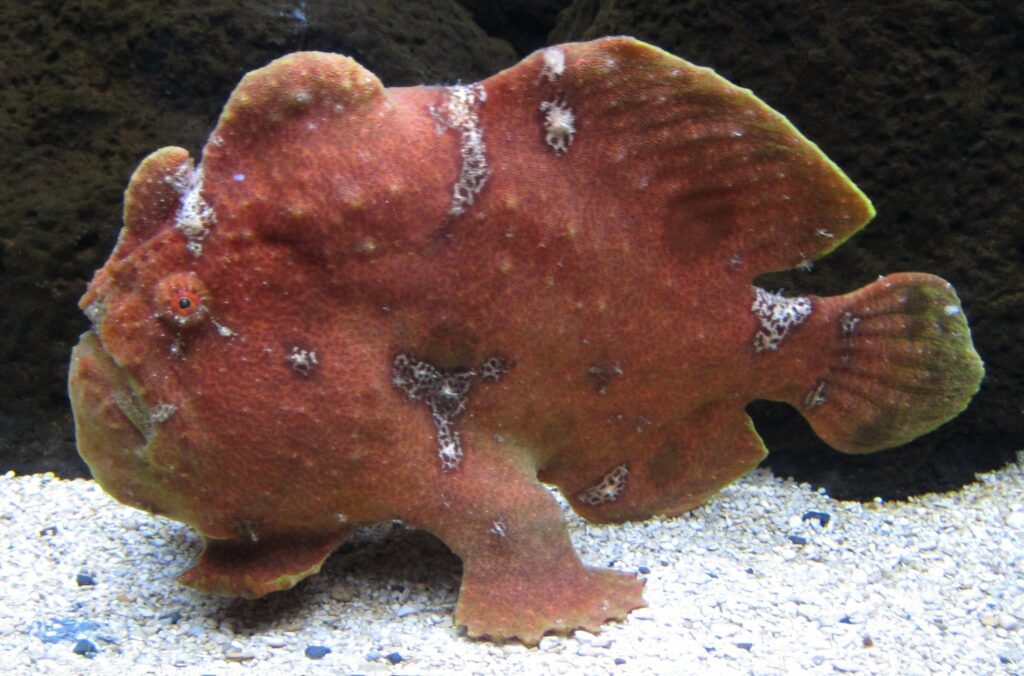
A Bit of Baensch Background
For those unfamiliar with Baensch, he is a highly revered marine fish breeder and aquaculturist, having founded Reef Culture Technologies where he successfully captive-bred several Centropyge angelfish species. The HLFP builds on those many years of success, the only difference being that Baensch now utilizes wild-harvested eggs to start his larval rearing projects.
As Baensch has explained, the use of wild-harvested eggs eliminates the variables and pitfalls of broodstock nutrition and maintenance when it comes to attempting to rear a species for the first time. While the resulting fishes don’t hit the technical definition of “captive-bred fish”, in every respect, they are solid proof-of-concept and pave the way for entirely captive production. The HLFP website currently notes that, “Fifty-six species from 26 families have been reared through settlement since 2011.”
Frogfishes As Breeding Subjects
Frogfishes remain an interesting subset of the marine aquarium hobby. They can often be quite colorful while also being highly cryptic in their patterning. As captive subjects, they are “reef safe” with corals but may readily consume any fish or ornamental crustacean that they can swallow, potentially as large as they are or even twice their own size, which can lead to some rather incredible predation events. As a result, frogfishes tend to be a bit of a special-interest subjects (even pets) and are often kept in a species tank or with other large fishes that will ignore the frogfish completely but aren’t potential prey.
The captive-breeding of frogfish presents a particular set of challenges. Of course, identifying a male/female pair and properly conditioning them is the first hurdle to overcome, but making sure that one mate doesn’t actually eat the other is a problem rather unique to this group of fishes! Baensch, utilizing a wild-collected eggs, didn’t have to worry about any of this.
Frogfishes are known to exhibit at least two distinct modes of reproduction. Some lay large demersal eggs (notably species of the genera Lophiocharon, Phyllophryne, and Rhycherus) that are hypothetically very easy to hatch and rear. However, many of the species commonly kept in tropical marine aquaria belong to the genera Antennarius and Histrio, and produce a large, gelatinous mass containing thousands (or even hundreds of thousands) of tiny eggs that float away in the ocean currents. Check out these amazing videos showing the process of frogfish spawning in the wild.
The resulting larvae are quite small, and presumably spend a considerable amount of time adrift. Macro images of incredibly tiny juvenile photographs in the wild certainly capture the imagination of marine fish breeders, but past attempts to rear them (notably Histrio histrio, the Sargassum Frogfish) have not been successful.
First Rearing of Pelagic Frogfish Eggs
Baesnch’s most recent larviculture breakthrough started with an Antennarius commerson egg raft collected five miles offshore of Oahu in January 2022. It took nearly three months (80 days) from hatch to settlement, with the results being adorable, pea-sized baby frogfish. This long pelagic larval duration no doubt accounts for the extremely wide distribution range for the species in nature.

The larvae of Commerson’s Frogfish were reared utilizing a wide range of feeds, including ciliates, rotifers, copepods and Artemia. The project was labor intensive, and identified multiple larviculture bottlenecks that would need to be refined.
Baensch believes this is the first-ever documented larval rearing of a frogfish species from the genera of pelagic spawners, and our records and prior research support that statement. The subtropical Tassled Frogfish, Rhycherus filamentosus, and the tropical Marble Mouthed Frogfish, Lophiocharon lithinostomus, have both been successfully bred in captivity, but feature the aforementioned large eggs and no pelagic larval phase (a.k.a. “direct development; watch this video of a Marble Mouthed Frogfish brooding large eggs on the reef).
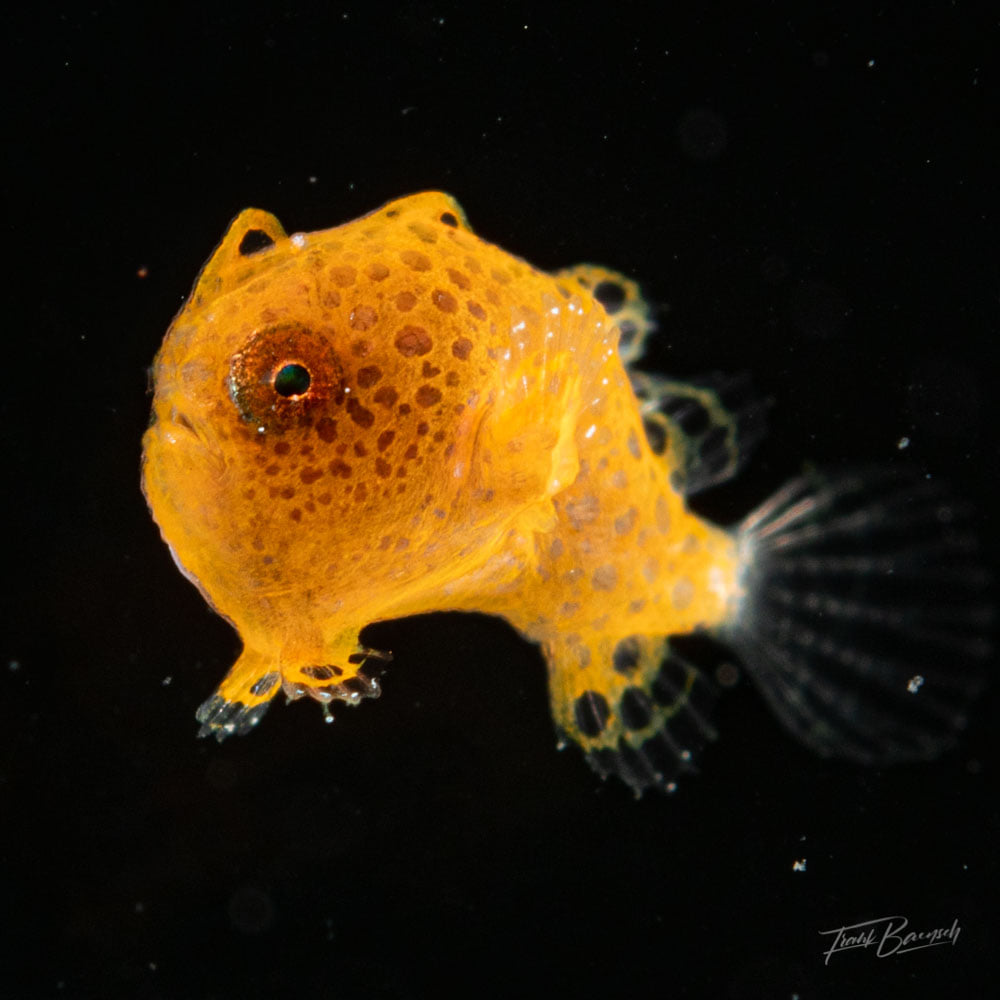
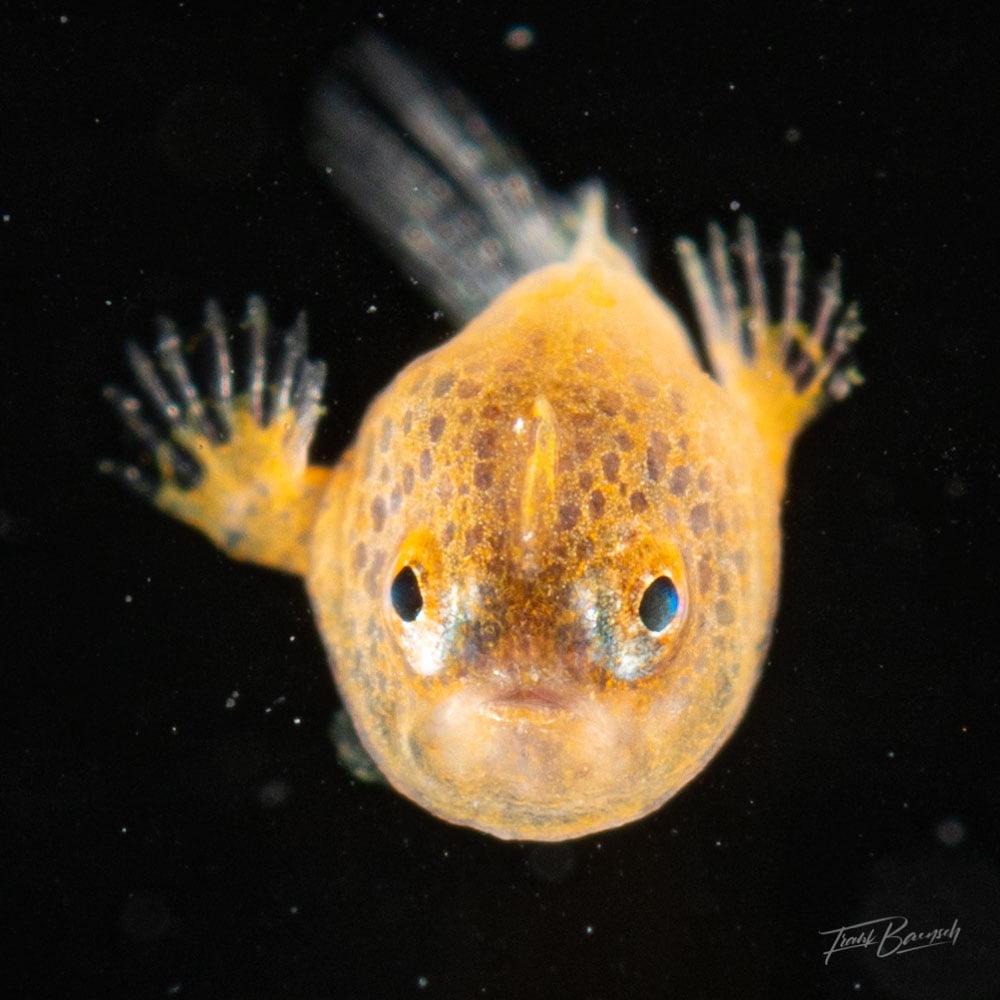
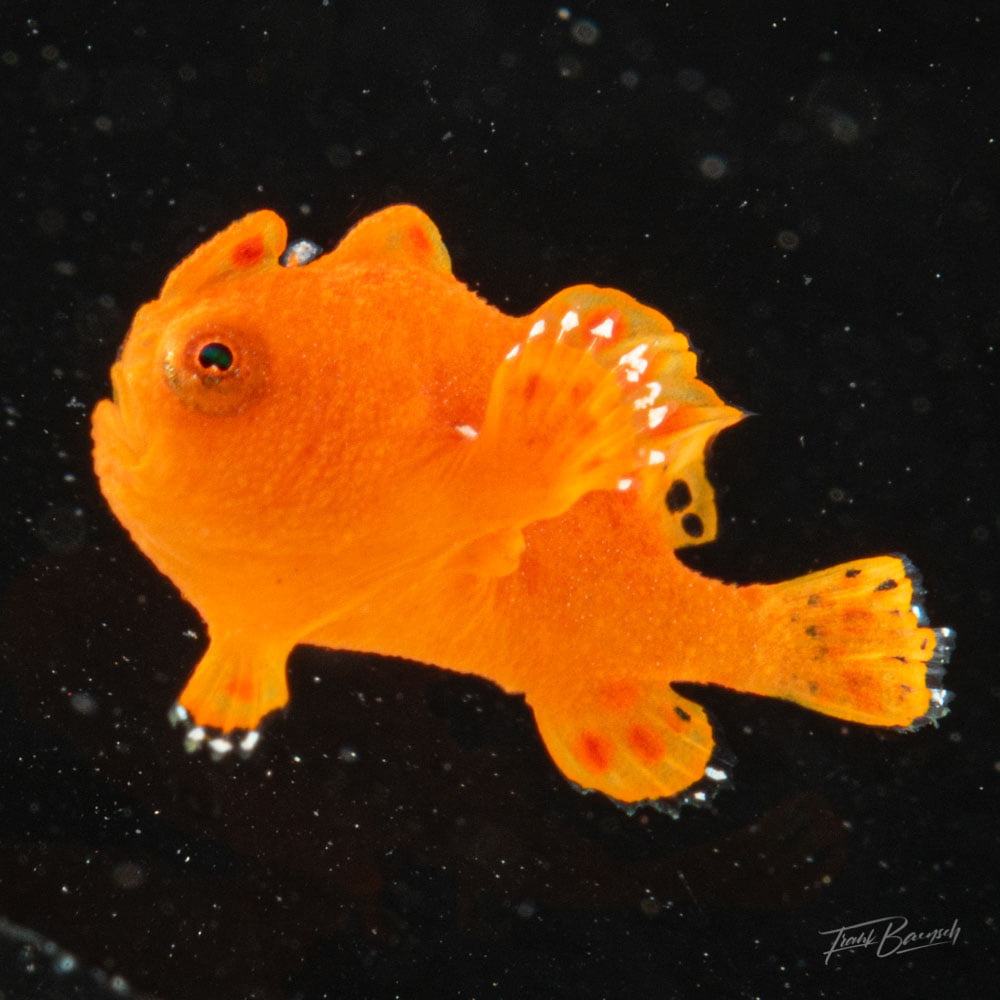
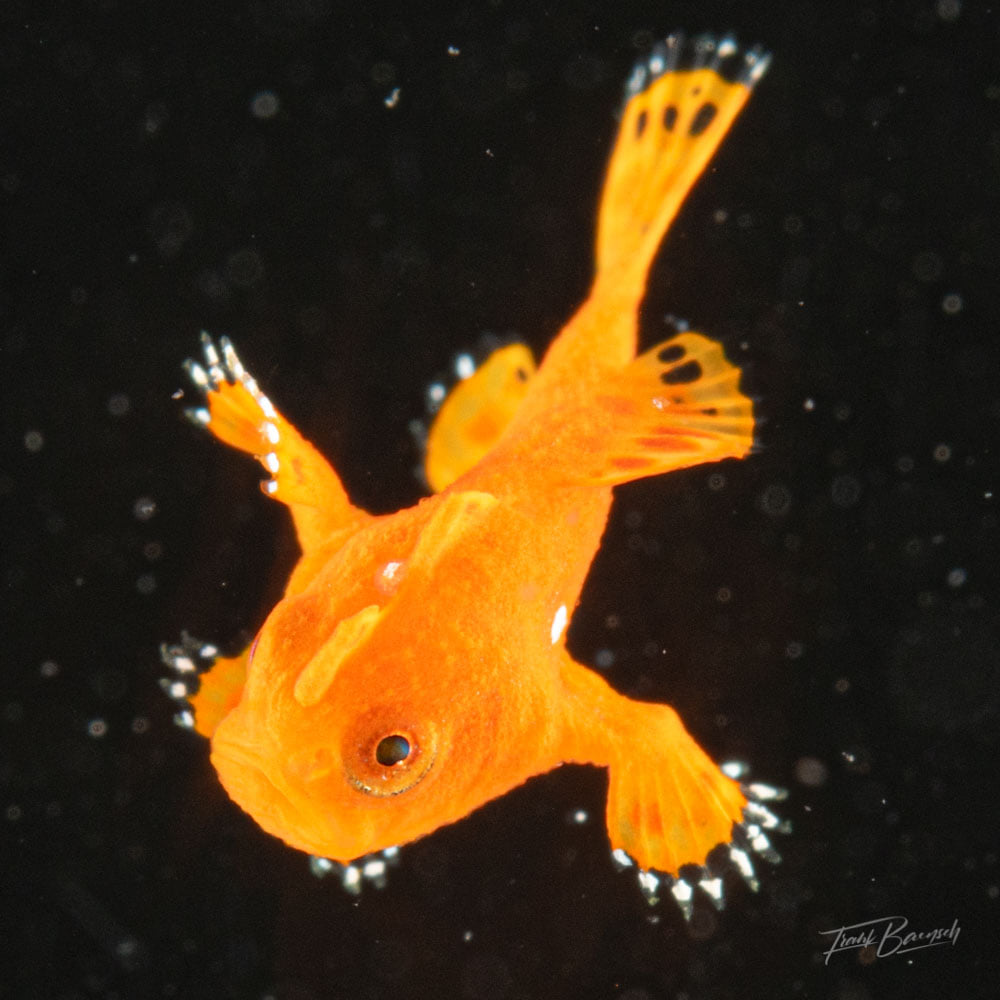
Breeders, Get The Details!
Baensch has published significant details regarding the larval rearing process on the HLFP website, so rather than republish those details simply read Commerson’s Frogfish Culture for further details. Our congratulations to Frank Baensch for yet another breakthrough accomplishment.


Trackbacks/Pingbacks